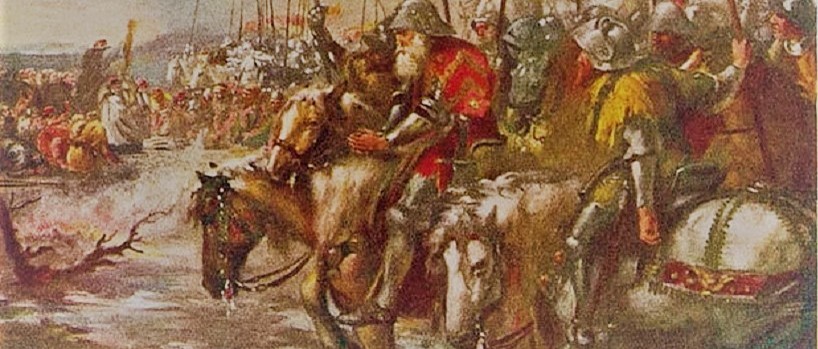Battle of Agincourt
Posted on 9th January 2021
Henry V travelled to France on 12 August 1415 with the intention of gaining the French throne he believed to be rightly his. This campaign led to one of the most important battles of the Hundred Years War.
After arriving in France, Henry captured the port of Harfleur, then he marched towards Calais, meeting French forces on the way.
The two armies were destined to meet on 25 October 1415. The English were heavily outnumbered, with many soldiers having been lost at the Siege of Harfleur; many further were suffering from sickness; they were also fatigued from over two weeks of marching, over 260 miles (420 km).
The battle took place on a narrow area of plough land between two densely wooded areas, hardly an ideal location. There had been heavy rains the night before and the land was muddy and hard to traverse.
The English army was led by Henry himself, with the Duke of York leading the vanguard and Lord Camoys leading the rear-guard; Sir Thomas Erpingham led the archers.
The French army was led by Charles d’Albret, Comte de Dreux.
The English army was made up of both foot soldiers and archers, although the vast majority were archers. The French also had archers but mainly consisted of knights, both on horseback and on foot.
When the battle commenced, even with the heavy use of archers by the English, the French initially pushed them back. The vast numbers of the French did not help their cause. As the French advanced in the narrow strait, they became entangled together and could not properly use their weapons.
The French knights wearing heavy armour struggled across the boggy ground, and if knocked over during the battle they found it hard to get back up and continue with the bombardment.
The more French that arrived on the battlefield, the less they could do.
Henrys forces rushed the French with swords and axes in hand and the French were massacred. Their losses were more than ten times that of the English.
Many French soldiers were taken prisoner after the battle, to only be executed later on the orders of Henry V.
The Battle of Agincourt was a huge victory for the English in the Hundred Years War, and following it Henry returned to England, received in triumph on the 23 November that year.
Tagged as: Junior Middle Ages
Share this post:





